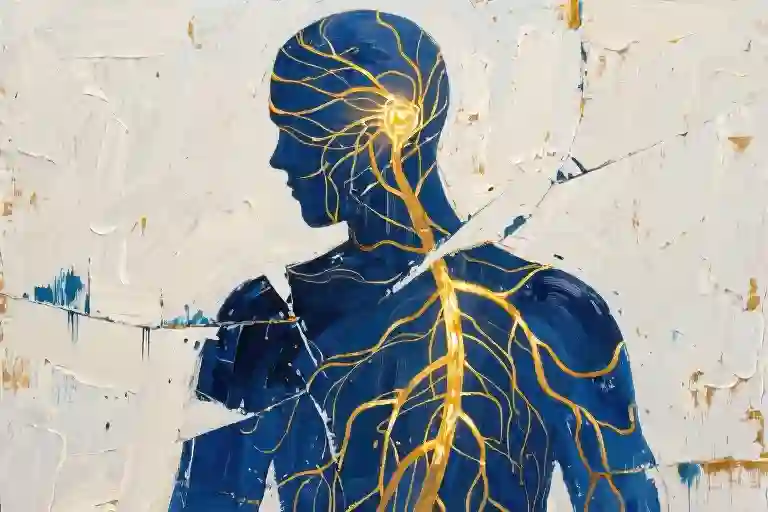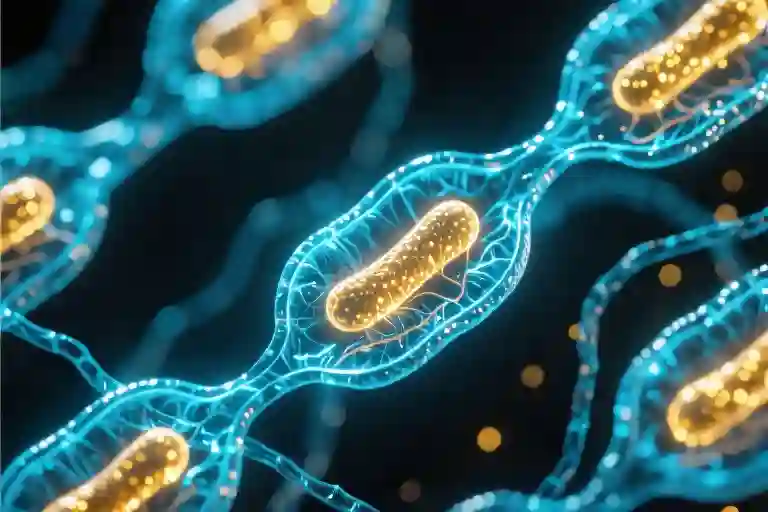The weight of unprocessed trauma lingers in ways we’re only beginning to understand. Those of us who’ve lived through significant adversity often develop this peculiar intimacy with our own suffering – we recognize its fingerprints on our sleepless nights, the unexplained aches, the emotional reactions that feel disproportionate to present circumstances.
Decades of research now confirm what trauma survivors have always known in their bones: these experiences don’t simply live in our memories. They take residence in our very biology. Bessel van der Kolk’s groundbreaking work demonstrated how trauma rewires nervous systems, how childhood adversity becomes physiological destiny for many. The ACEs study – that massive ongoing research project tracking adverse childhood experiences – revealed the startling math: each major childhood trauma increases lifelong risks for heart disease, autoimmune disorders, even cancer, as definitively as smoking predicts lung cancer.
Yet here’s what the textbooks often miss: this knowledge lives differently when it’s your body remembering. When your hands shake years later at a raised voice that has nothing to do with you. When doctors can’t explain your digestive issues or chronic pain. That moment you realize your “overreactions” aren’t character flaws – they’re your body faithfully reproducing survival responses that once kept you safe.
The science gives us language for what we’ve sensed all along. Trauma isn’t just psychological. It’s musculoskeletal tension that won’t release. It’s an immune system stuck in fight mode. It’s the gut microbiome altered by constant stress hormones. Modern trauma research finally catches up to our lived truth: the body keeps the score, sometimes louder than the mind ever could.
How Trauma Changes Us: The Science Behind the Scars
The understanding of trauma’s lasting impact didn’t emerge overnight. It began with quiet observations in medical offices during the 1950s, when doctors first noticed peculiar patterns among certain patients. Those who’d experienced childhood adversity seemed to develop chronic illnesses at startling rates, their bodies carrying invisible wounds long after the events themselves had passed.
This clinical curiosity eventually grew into the groundbreaking ACEs (Adverse Childhood Experiences) study, one of the largest investigations of childhood abuse and household challenges. Researchers discovered something revolutionary – trauma isn’t just psychological. It rewires our biology, altering how our nervous system functions and how our genes express themselves. The higher someone’s ACE score, the greater their likelihood of developing conditions like heart disease, autoimmune disorders, and even certain cancers later in life.
Our bodies remember what our minds try to forget. When trauma occurs, the brain’s alarm system – particularly the amygdala – gets stuck in overdrive. Imagine a car alarm that won’t turn off, constantly signaling danger even when none exists. This explains why trauma survivors might startle easily, experience unexplained pains, or feel constantly on edge. The body keeps score, as Bessel van der Kolk famously described, holding onto traumatic memories through muscle tension, digestive issues, or chronic fatigue.
Neuroscience shows how trauma changes our very wiring. The prefrontal cortex, responsible for rational thinking, becomes less active during traumatic events while the emotional centers go into overdrive. This survival mechanism helps during actual danger but becomes problematic when the threat passes yet the body remains on high alert. Many survivors describe feeling ‘stuck’ in their trauma responses long after the events ended.
These biological changes manifest in daily life through what might seem like unrelated symptoms – trouble sleeping, difficulty concentrating, or sudden emotional outbursts. The connection between a racing heartbeat during a work meeting and childhood trauma might not be obvious, but the body remembers. It reacts to present-day stresses as if they were past dangers, creating physical responses that feel confusing without this context.
Understanding these mechanisms does more than satisfy scientific curiosity. It validates the very real physical symptoms many trauma survivors experience but struggle to explain. When medical tests come back normal yet pain persists, when fatigue feels unshakable despite adequate rest – these may be the body’s way of speaking its traumatic history. The science gives us language for what survivors have always known intuitively: trauma doesn’t live just in our memories, but in our cells.
The Three Dimensions of Trauma Impact
Trauma doesn’t just live in our memories—it rewires our entire being. The aftermath spreads through our psychological landscape, physical health, and daily behaviors in ways that often feel beyond our control. Understanding these patterns isn’t about labeling ourselves as broken, but recognizing the profound adaptability of human survival mechanisms.
The Psychological Landscape
Flashbacks aren’t simply bad memories—they’re the nervous system’s malfunctioning alarm system replaying danger signals on loop. That sudden tightness in your chest when a car backfires, the way certain tones of voice make your hands shake, these are physiological echoes of past events. Research from the National Institute of Mental Health shows trauma survivors experience anxiety disorders at three times the general population rate, not because we’re weaker, but because our threat detection systems became too good at their job.
Emotional numbness often gets misunderstood as indifference. In reality, it’s the psyche’s emergency shutdown valve—when emotions became unbearable during trauma, the brain learned to disconnect as protection. Now it struggles to differentiate between real threats and ordinary stress, leaving many of us oscillating between overwhelm and detachment.
The Body Keeps Score
Chronic pain. Autoimmune disorders. Persistent digestive issues. These aren’t imaginary complaints—the CDC’s ACEs study demonstrated how childhood trauma literally embeds itself in our biology. Adults with four or more adverse childhood experiences face double the risk of cancer and quadruple the likelihood of emphysema. The inflammation from constant stress responses wears down organ systems like an engine forced to run at redline for years.
Skin conditions like eczema and psoriasis frequently flare up during emotional distress because the skin, our largest organ, remains intimately connected to the nervous system. Migraines often trace back to trauma history—the brain’s overactive threat response keeps muscles tense and blood vessels constricted. These physical manifestations aren’t personal failures, but the body’s coded language for unmet emotional needs.
Behavioral Adaptations
That “irrational” avoidance of crowded places? Probably kept you safe once. The difficulty trusting new people? An understandable defense when early relationships proved dangerous. Addiction patterns frequently emerge as attempts to self-medicate the unbearable sensations trauma left behind. These behaviors made sense in context—the challenge lies in updating them when circumstances change.
Social withdrawal often stems from what psychologists call “faulty neuroception”—our systems misread safe environments as threatening. You might cancel plans last minute because your body registers casual socializing as perilous, leaving friends confused and you frustrated with yourself. This isn’t a character flaw, but a neurological miscalculation that can be recalibrated.
What we call symptoms are actually brilliant survival strategies that outlived their original purpose. The depression that helped you emotionally check out from an unbearable situation? It worked. The hypervigilance that caught subtle danger cues? It protected you. These adaptations deserve compassion, not condemnation—they’re evidence of your resilience, not your brokenness.
From Awareness to Action: Pathways to Healing
The journey from understanding trauma to actively engaging in healing can feel overwhelming. Where does one even begin? The good news is that decades of research have given us concrete tools and approaches that actually work. You don’t need to navigate this alone, and small steps can make profound differences over time.
Starting With Self-Assessment
Before diving into solutions, it helps to understand where you stand. The Adverse Childhood Experiences (ACE) questionnaire remains one of the most accessible starting points—a simple 10-question survey that takes about five minutes. While no test can capture the full complexity of your experiences, seeing your ACE score (available through organizations like the CDC) often provides that first ‘aha’ moment of recognition. Many people describe feeling strangely relieved when their physical symptoms and emotional struggles suddenly make sense in this context.
Professional Approaches That Work
For those ready to seek professional support, two evidence-based methods stand out:
- EMDR (Eye Movement Desensitization and Reprocessing): A structured therapy that helps process traumatic memories by engaging the brain’s natural adaptive mechanisms—often described as ‘defragmenting’ traumatic experiences.
- Somatic Therapies: Approaches like Sensorimotor Psychotherapy focus on releasing trauma stored in the body through mindful movement and body awareness, working with physical sensations rather than just talking about memories.
These aren’t abstract concepts—they’re tools used daily in therapists’ offices worldwide, with protocols refined through decades of clinical practice. The key is finding a practitioner trained specifically in trauma work; not all therapists have this specialized skillset.
Books That Shift Perspectives
When you’re not in a therapy session, these three books offer companionship and clarity:
- The Body Keeps the Score by Bessel van der Kolk – The modern classic explaining how trauma reshapes both body and brain, with compelling case studies.
- Trauma and Recovery by Judith Herman – A feminist perspective on trauma’s societal dimensions and the three-stage healing model.
- When the Body Says No by Gabor Maté – Explores the mind-body connection in illness, particularly how unprocessed stress manifests physically.
Each comes with a caveat: read them when you feel resourced. These aren’t breezy self-help books but deep dives that may stir difficult emotions—perfect examples of ‘important but not urgent’ reading.
When Overwhelm Hits: A Grounding Practice
Even reading about healing can sometimes flood the system. Try this immediate reset button:
- Pause and name five things you see around you—colors, textures, ordinary objects.
- Notice four physical contacts—your feet on the floor, the chair supporting you.
- Identify three ambient sounds—traffic, birds, your own breath.
- Detect two smells—maybe coffee, laundry detergent, nothing fancy needed.
- Move one body part intentionally—wiggle toes, roll shoulders.
This isn’t about solving anything but simply returning to the present moment—a skill trauma survivors often need to consciously rebuild. The entire sequence takes about 90 seconds but can short-circuit rising panic.
What matters most isn’t which path you choose first, but recognizing that multiple validated options exist. Healing isn’t a linear process, and what works one month may feel insufficient the next. That’s normal. The act of choosing any forward motion—whether taking the ACE quiz, reading a chapter, or trying that grounding exercise—begins rewiring the nervous system toward safety.
You Are Not Alone: Stories of Hope and Healing
Trauma has a way of making us feel isolated, as if we’re the only ones carrying these invisible wounds. But the truth is far more comforting – you’re part of a quiet community of survivors who understand without explanation. Here are glimpses of journeys that might resonate with yours.
One woman in her forties described finally connecting her chronic digestive issues to childhood neglect after reading about ACEs. ‘The physical pain made sense when I saw my body was still reacting to being that scared little girl,’ she shared. Working with a trauma-informed therapist, she learned to recognize early warning signs and respond with compassion rather than frustration.
A veteran who struggled with emotional numbness for years found breakthrough through somatic experiencing. ‘I thought I was broken because I couldn’t feel anything,’ he recalled. ‘Turns out my nervous system was just protecting me. Learning to feel safe in my body again changed everything.’
These stories aren’t about dramatic transformations, but about those pivotal moments when understanding clicks into place. That first realization that your reactions aren’t flaws – they’re your body’s intelligent adaptations to survive what once felt unsurvivable.
When It All Feels Like Too Much
If you’re feeling overwhelmed reading this, try this simple grounding exercise:
- Pause and notice your feet touching the floor
- Name five things you can see around you
- Take three slow breaths, counting to four on each inhale and exhale
- Press your palms together firmly for ten seconds
- Sip cool water and notice its temperature
This isn’t about fixing anything immediately. It’s just a way to remind your nervous system that right now, in this moment, you’re safe.
Where To Find Help
You don’t have to navigate this alone. Here are some immediate resources:
- United States: National Suicide Prevention Lifeline (988)
- UK: Mind Infoline (0300 123 3393)
- Canada: Crisis Services Canada (1-833-456-4566)
- Australia: Lifeline (13 11 14)
- International: The Crisis Text Line (text HOME to 741741)
Professional organizations like the International Society for Traumatic Stress Studies (ISTSS) maintain directories of trauma specialists worldwide. Many therapists now offer sliding scale fees or online sessions, removing barriers to access.
Healing isn’t about erasing what happened or becoming someone new. It’s about learning to carry your experiences differently – not as shameful secrets, but as evidence of your remarkable capacity to endure. However you choose to move forward, whether through therapy, creative expression, community support or quiet self-reflection, your way is valid. The simple act of reading this means you’ve already taken the first step toward reclaiming your story.
Closing Thoughts
The weight of trauma can feel like carrying an invisible burden that reshapes how we move through the world. But here’s what matters most: this weight isn’t yours to carry alone, and it doesn’t have to define your path forward.
If reading this has stirred difficult emotions, pause. Close the tab. Step outside and feel the sun or rain on your skin. Your wellbeing always comes first—there’s no expiration date on processing these truths.
Healing isn’t about erasing scars but learning their language. Those sleepless nights? Your nervous system recalibrating. The stomachaches before social events? An old alarm system still running diagnostics. These aren’t flaws—they’re proof of how hard you’ve worked to survive.
Small steps count more than grand gestures:
- Drink water when you notice your jaw clenched
- Text a safe person one honest sentence
- Trace the outline of your hand on paper when thoughts spiral
The body that remembers trauma also remembers safety. It just needs reminders—a deep breath held for four seconds, the smell of lavender, the weight of a blanket. Start there.
Below are lifelines if you need immediate support (confidential and available 24/7):
- US: Crisis Text Line (Text HOME to 741741)
- UK: Samaritans (116 123)
- Australia: Lifeline (13 11 14)
Trauma rewires, but so does compassion. However you choose to tend to your wounds—therapy, art, silence, or screaming into pillows—you’re already doing the work by showing up here. That’s enough for today.





